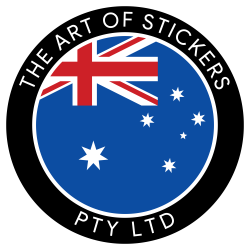![]() The terrible confusion between DPI and PPI
The terrible confusion between DPI and PPI
Sometimes life can be cruel and two very different things get confused as being the same as each other.
One such thing is DPI and PPI.
In the printing world, DPI stands for Dots Per Inch and is a measure (print resolution) for printing equipment about how many ink or toner dots are put down per inch.
PPI stands for Pixels Per Inch (pixel=picture element) and is a measure (digital resolution) of how many pixels are in an inch of a digital image (Bitmap).
The two have no relation to each other and DPI is often wrongly used when describing the resolution of a digital bitmap image. Perhaps when the transition to printing from digital images started many years ago, printers and designers may have inadvertently called PPI DPI because both printing and digital systems use the term ‘resolution’ even though it applies differently in each process.
Unless you’re a printer or have some interest, you don’t need to be concerned with DPI. Because modern print machines can print at very high resolutions, it’s almost not worth thinking about.
If you are sending us digital images to be printed, then it is worth having an understanding of PPI and it’s fairly simple. PPI (Pixels Per Inch) is how many pixels in each inch of a digital bitmap image, the more pixels there are, the more information in that square inch which means more detail and sharper images. If you keep zooming into a digital bitmap image you will start seeing squares which are the pixels that make up the image. Each pixel is its own colour and images with a high-resolution of pixels will make colours seemingly transition smoothly, but pictures with a low resolution of pixels will look harsh in their transition and hence the term ‘pixelated’.
Most lower end digital cameras and phone cameras take photos with a resolution of 72PPI, the size at which they are taken can vary considerably.
For example if a photo is taken with the overall pixel size of 1632 x 1224 at 72PPI then the print size in inches will be 22.667 inches x 17 inches (57.57cm x 43.18cm). Divide 1632 by 72 and 1224 by 72.
For larger prints, 72PPI isn’t a good resolution to print from (unless the print is going to be viewed from a distance), the print won’t have sharpness at this size because there isn’t enough pixels per inch to transition the colours in a smooth fashion. A recommended resolution of 250PPI to 300PPI can produce good results, so the the example of 1632 x 1224 pixels at 300PPI will work out to a print size of 5.44 inches x 4.08 Inches (13.82cm x 10.36cm). This produces a smaller print but the smallness blends the pixels seemingly better to the human eye.
To make a beautiful print, you need to start with a beautiful piece of equipment.
Cameras are not cameras anymore and megapixels has become mostly a marketing term. 1 megapixel equals 1 million pixels. An 8 megapixel camera is capable of capturing 8 million pixels however the quality of those pixels and the way they transition from one to another depends more on the quality of the optical lens, image sensor and image processor – this process will decide how much of the information in an optical image will be converted into electronic data. High end cameras are capable of taking pictures with 300PPI which means there is a lot more data within the file and more detail when printed.
We get a lot of pictures sent by customers wanting to get printed as stickers and signs. Small stickers are usually fine with low quality pictures but signs are usually bigger and using low quality pictures will make the sign look cheap, which makes our product look cheap and can make your business look cheap – perception – we all have it.
“To effectively communicate, we must realize that we are all different in the way we perceive the world and use this understanding as a guide to our communication with others.”
– Anthony Robbins
